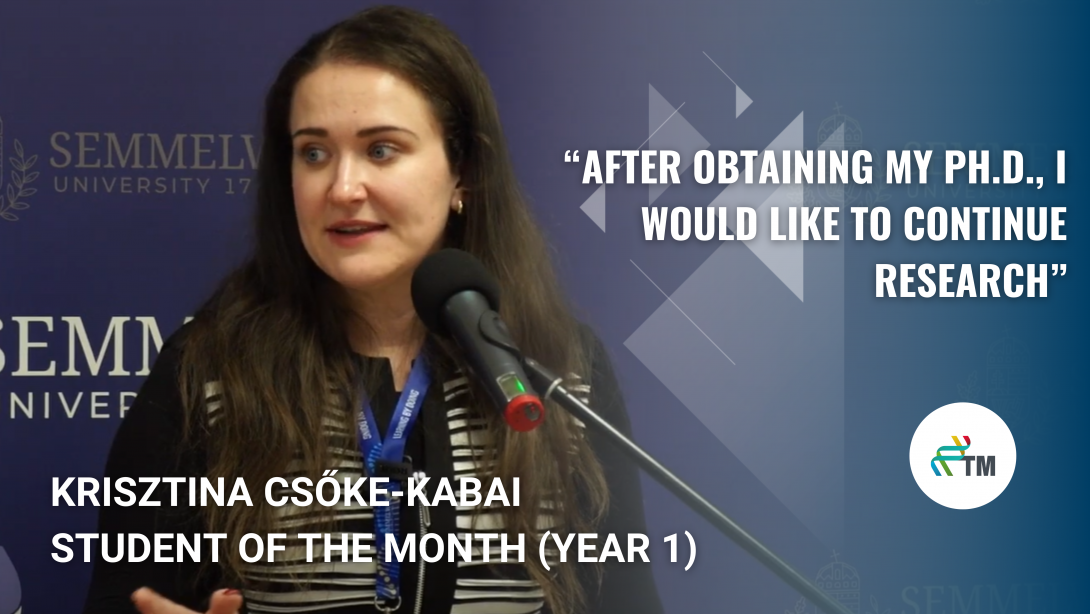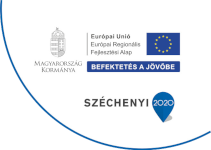
She is an excellent student of the Critical Care Group, who performed outstandingly in the 3-month Progress Report in December. She is not only making significant progress in her studies, but is always willing to help her groupmates as well. In December, Krisztina Csőke-Kabai was named Best First-Year Ph.D. Student at Centre for Translational Medicine.
Dr. Krisztina Csőke-Kabai is a senior resident at the University of Szeged, Department of Emergency Medicine. She is currently taking a break from clinical work to care for her baby, but she has not distanced herself from research. „I started my PhD training when my daughter turned one year old. The CTM program was ideal for me because I couldn't work 12-hour shifts in the emergency department because of my little girl, but I was attracted by academic work. It was fantastic that I could join the training alongside my baby.”
Dr. Csőke-Kabai learned about the CTM course from a friend who had mentioned it to her in the previous academic year. „I knew that the program is excellent and that we get a lot of help from supervisors, methodological experts and statisticians of the CTM. I was also pleased with the e-learning system, which is very practical. And I was delighted to find out who the leaders of the Critical Care Group are. One of them is Prof. Dr. Zsolt Molnár, who became my co-supervisor alongside Dr. Krisztián Tánczos.” In her first project, Dr. Csőke-Kabai investigates the efficacy and safety of prehospital targeted temperature management on neurological outcomes in out-of-hospital cardiac arrest patients. She chose this topic because it also relates to ambulance, emergency care, anesthesia and intensive care.
„In the guidelines, it is not clear yet when to start prehospital targeted temperature management in cardiac arrest patients. The current consensus is that in intensive care units patients should be cooled as soon as possible, because results show that this improves neurological outcome and recovery. In our research, we want to find out if this is also the case in the ambulance. So whether it is worth starting physical cooling in the ambulance during resuscitation.” So far, clinical results show that patients have significantly lower body temperatures on admission to hospital due to early cooling, and that they reach the target temperature in a shorter time. The researchers' hypothesis is that this intervention improves neurological recovery, but this has not yet been confirmed. So, there was no improvement in neurological outcomes in patients whose cooling had been started earlier. It would be interesting to investigate the reason behind this phenomenon, because the experience in the intensive care units shows that it is worth starting cooling as early as possible.
Dr. Csőke-Kabai plans to return to work at the Emergency Department this September, and like the others, she will complete her Ph.D. alongside her work. She finds that this will fit in with her clinical work and her duties with her little girl. With all the help from her mother and husband, she is confident that work will continue to go smoothly. After obtaining her PhD, she would like to continue her research. She sees a good opportunity for it, because the CTM course provides her with all the necessary knowledge.
(Szabó Emese)
